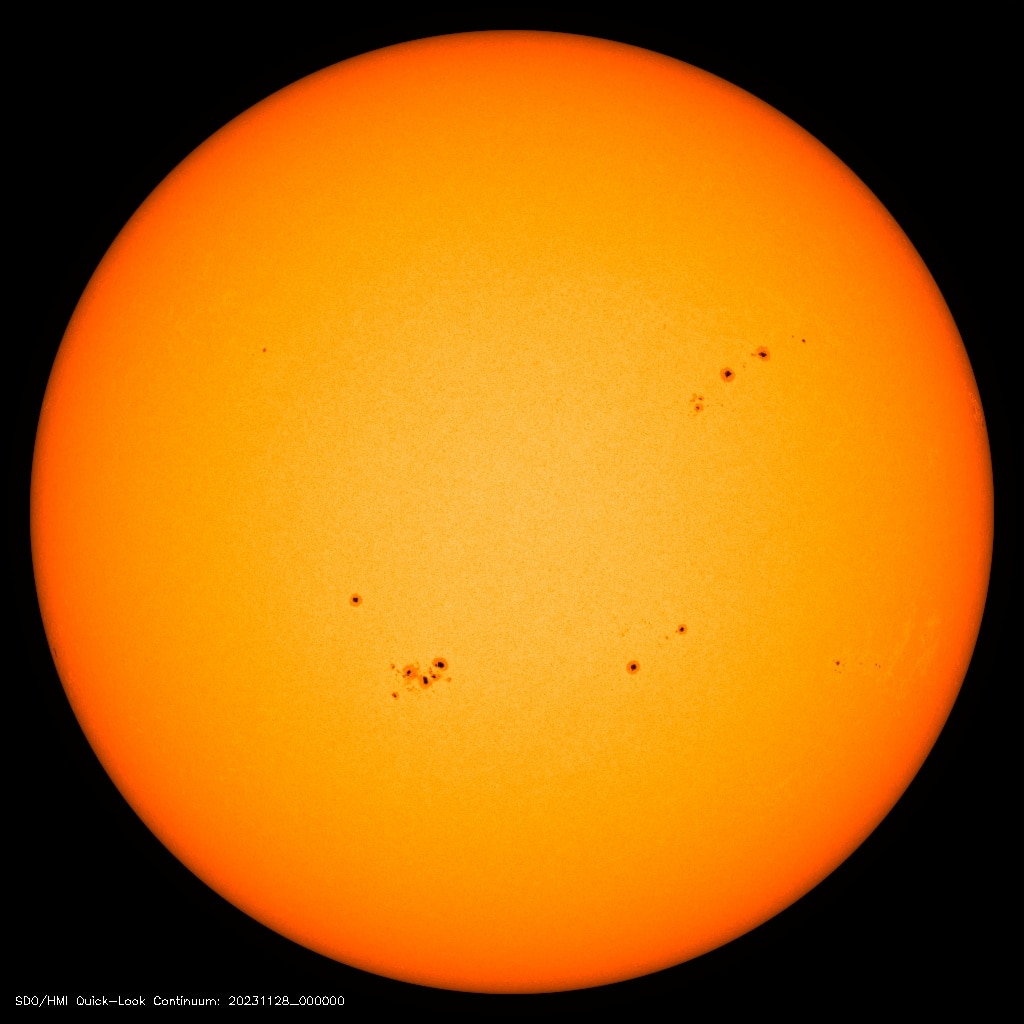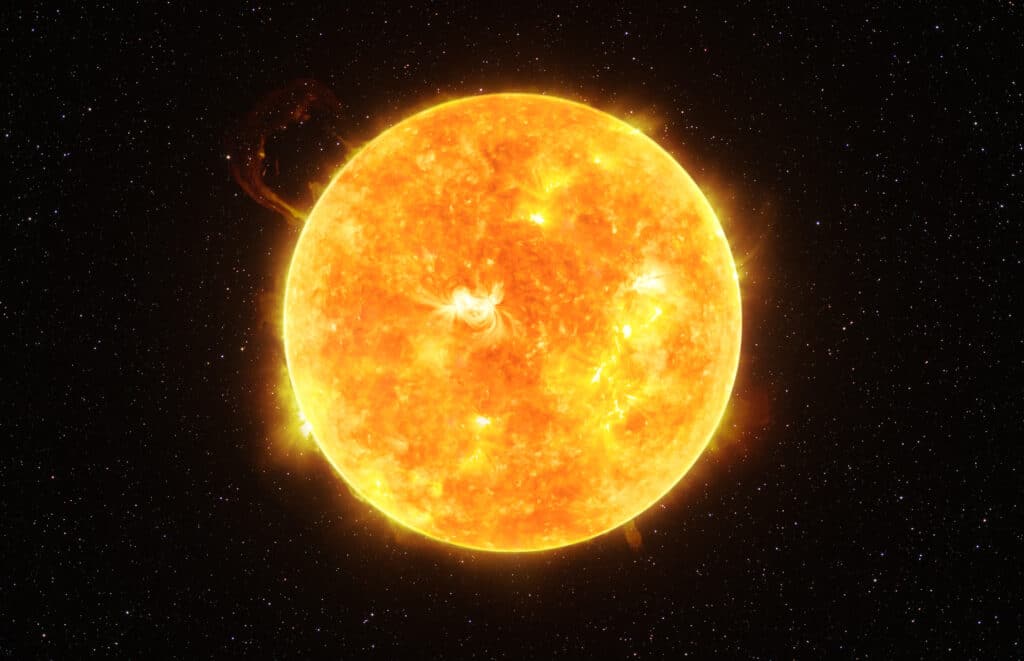Scientists from the Center of Excellence in Space Sciences India at IISER Kolkata have announced a significant discovery that links the Sun’s magnetic field to its sunspot cycle, with a specific focus on the upcoming peak in solar activity expected in 2024. Their research provides crucial insights into predicting the timing of these peaks, which are essential for understanding and preparing for solar-induced disturbances on Earth.
At the core of this discovery lies the Sun, a massive star composed of hot ionized gas or plasma. This plasma generates magnetic fields inside the Sun, which appear on its surface as sunspots. These spots, sometimes as large as Earth, harbor magnetic fields about 10,000 times stronger than those on Earth.
Key takeaways:
- Researchers at IISER Kolkata have discovered a new way to predict the peak of solar activity.
- Their work indicates that the peak of solar cycle 25 is likely to occur within a year.
- The Sun’s magnetic field and its sunspot cycle are linked.
- The rate of decrease of the Sun’s dipole magnetic field is related to the rate of rise of the sunspot cycle.
- This discovery could help to improve forecasts of space weather.
Occasionally, these sunspot magnetic fields undergo violent disturbances, giving birth to solar magnetic storms like flares or coronal mass ejections. These storms can be detrimental, ejecting high-energy radiation and magnetized plasma into space. When directed towards Earth, they pose a significant threat to satellites, power grids, and communication systems.
The Challenge of Predicting Solar Cycles
For centuries, scientists have observed that sunspots follow an approximately 11-year cycle, with a peak in numbers and solar activity intensity. However, accurately predicting the timing of these peaks has been a persistent challenge.
The solar cycle is driven by a dynamo mechanism, fueled by plasma flows within the Sun. This mechanism involves two primary components of the Sun’s magnetic field: the sunspot cycle and the large-scale dipole field, akin to Earth’s magnetic field. These components are interconnected, with the Sun’s dipole field reversing its north and south magnetic poles every 11 years, coinciding with the sunspot cycle.

In 1935, Swiss astronomer Max Waldmeier uncovered a relationship indicating that stronger sunspot cycles rise more rapidly to their peak intensity, forming the basis for early predictions of sunspot cycle strength.
The IISER Kolkata team has now discovered a complementary relationship. They found that the rate of decrease in the Sun’s dipole magnetic field correlates with the rate of rise of the ongoing sunspot cycle. This discovery, derived from decades of data from global solar observatories, not only complements the Waldmeier effect but also suggests that the evolution of sunspots is integral to the solar dynamo process.
Predicting the Peak of Solar Cycle 25
Using this new relationship, the researchers predict that the peak of the current sunspot cycle (solar cycle 25) is imminent, likely to occur in early 2024, with a possible extension to September 2024. This marks a significant advancement in forecasting the timing of solar cycles, crucial for anticipating intense solar activity and space weather disturbances.
This breakthrough offers a new perspective on predicting solar activity, potentially aiding in better preparation for the impacts of solar magnetic storms on our technology-dependent world. It underscores the intricate relationship between different components of the Sun’s magnetic field and their collective influence on solar phenomena.
The full research paper can be read in the Monthly Notices of the Royal Astronomical Society: Letters.













Comments